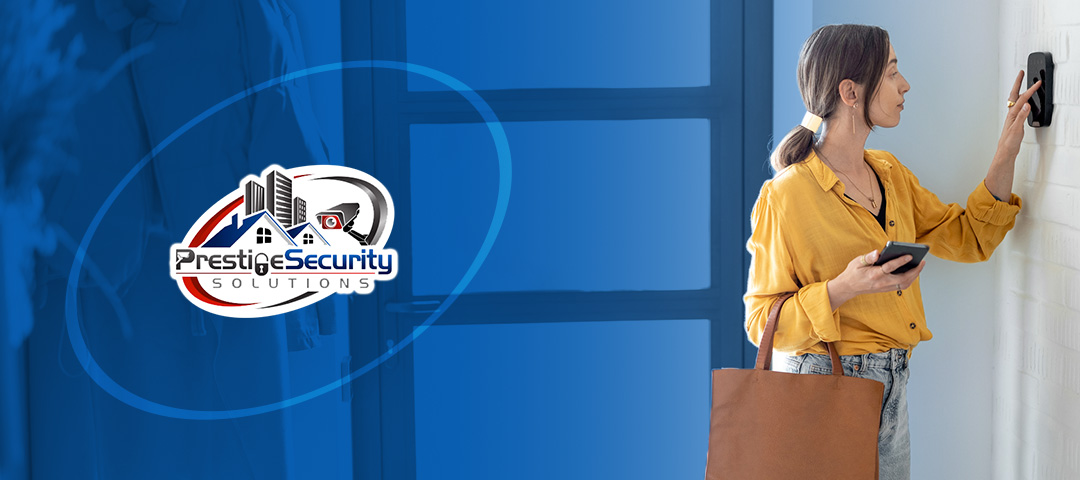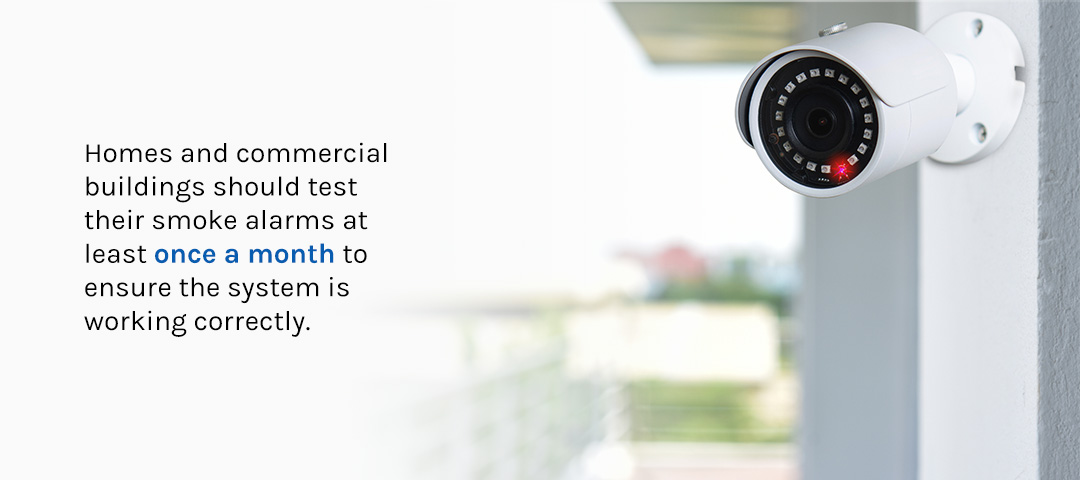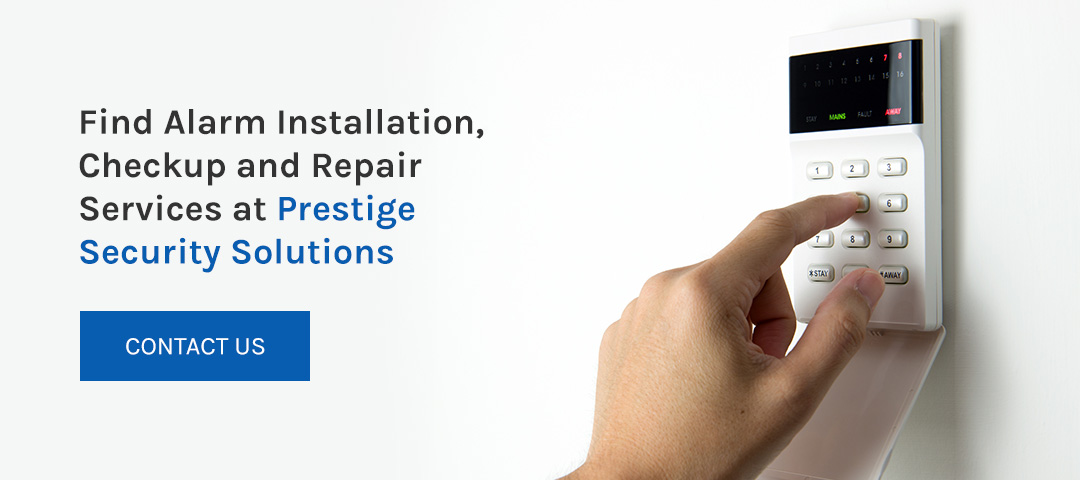Last Updated on November 11, 2022
Testing your alarm system should happen on a consistent basis. If you are unsure when and how to test security alarm systems, follow these necessary steps to check the system regularly, especially after someone has been in your home or building and after emergencies.
Why Should You Test Your Security System?
While a security system works all day, the business or homeowner may not always be available to check for updates. To discover when certain features have stopped working, regularly test the system to ensure that you catch any vulnerabilities or fix broken mechanisms. Without a consistent alarm testing procedure, owners may not realize there is a potential hazard or that the building is at risk.
Some reasons your system may not work include:
- Worn or damaged sensors: Damaged sensors cause the entire security system to malfunction or may fail to send signals to the monitor control station.
- A phone or Internet provider change: The wiring or service for your phone or internet provider may have changed or been damaged.
- Power surges or brownouts: During a power surge, damage to electronics or other wiring components may cause issues with the overall system.
- Disconnected wires: Whenever workers or family members have been inside the home, wires may have been jostled, cut or disconnected.
- Criminal activity: If a criminal has entered your building or home, they may have disabled the system so they can break in later.
Test the sensors and communications functions regularly. These two features require consistent tests because they are integral in keeping the security system running.
Sensors often detect when someone is breaking into a building or home. If the sensor experiences damage or malfunctions, it will not communicate to you that there is a burglary or imminent threat. Even damage to a single sensor could help criminals find a way into the building. You or an installation and maintenance professional can easily test your security sensors and quickly assess them for damage as often as every few days, weeks or months. Some systems test themselves automatically, depending on what brand you have.
Communication features work with security alarms to notify the central monitoring station of a breach or threat. An active alarm should quickly alert the building owners or homeowners to the situation, but a broken system will not alert them at all. In some scenarios, a siren will sound even if the communication system breaks. Still, if no one is present in the building or home, having no security system communication reduces your chance to respond immediately. Test communication features often to ensure notifications alert you and the police during an emergency.
Benefits of Testing Alarm Systems
The many benefits of security system testing include the ability to manage risks better, reduce the potential costs of damage and comply with laws and regulations. For commercial properties, a security system ensures customer trust in your business.
- Risk management: By checking the system for weaknesses and vulnerabilities, you can prepare your home or building for potential risks and defends against threats or breaches. Commercial properties can protect their products, and homeowners may defend their valuables and personal items.
- Reducing costs: Testing home alarm systems lets you save on the cost of potential damages. Using new technology can better protect the building.
- Law and regulation compliance: Many federal or state laws require that security systems undergo consistent testing to ensure they comply with regulations.
- Customer trust: For business owners, a safe security system will give your customers peace of mind and build trust in your business. Though homeowners don’t have customers, your family and guests will feel safer with a security system in place.
How Often Should You Test Your Alarm System?
According to the U.S. Fire Administration (USFA), homes and commercial buildings should test their smoke alarms at least once a month to ensure the system is working correctly. Many choose to test their security alarms at the same time they test their sprinklers and smoke alarms, which is a great idea. It is good practice to test your security system every month, especially when setting up the system for the first time, after service technicians or renovators have visited the home or if the internet service has changed.
You should test your security system whenever the building becomes vulnerable. Use your monitoring center’s recommendations and common sense to decide when to test your security system. Here are a few scenarios in which it is essential to test your system:
After Service or Utility Workers Leave
Whether the person visiting is a cable worker, appliance repair person, plumber, exterminator, painter or electrician, testing your system when they leave ensures your alarm is secure. Many consider these workers trusted professionals, but there is always the possibility they may have accidentally or intentionally disabled a system feature, leaving your building vulnerable.
To prevent theft or security risks, double-check that the system is secure inside and outside the building or home.
After You’ve Made Building Modifications
If you or a professional have been replacing doors and windows or screwing into drywall, the system could have been damaged or wires been cut during construction. While some security systems can detect accidents, not all of them can detect severe damage.
After a Storm or Power Outage
Storms and power outages may damage the internal wires of the system or cause other electrical problems. If your local area often experiences storms, it may be good practice to test the system whenever an outage occurs.
How To Test Your Alarm System
To learn how to test alarm systems, collect all the information needed to contact the monitoring center and conduct trip tests. Follow these five steps to test your alarm system.
1. Contact Your Monitoring Center
Contact your monitoring center to inform them you are about to run a test. Be prepared with your account number, password and address of location so your operator can put the system in test mode.
2. Secure Doors, Windows and Other Items
Make sure you close all doors and windows and secure any other items connected to the alarm. You want to arm the system as if you were leaving the location for the day. Wait for the delay time to run out before moving to the third step.
3. Test Each Device
Open each door and window secured by an alarm. You’ll want to test all the devices by tripping them and watching for an alarm signal. Ensure the system is in test mode so the tripped devices don’t notify the police. If you have a siren installed, keep in mind that it will make a loud noise.
4. Disarm the Alarm System
Wait about a minute to ensure the alarm has communicated signals to the monitoring center. Afterward, you can disarm each alarm system or device and turn off any sirens or sound alarms. For those worried about the disturbing noises, it may be a good idea to relocate employees, pets and residents off the premises before testing time.
5. Confirm Results With Your Monitoring Center
Lastly, confirm those results with your monitoring center by calling them with your account number, password and address. After verifying the test was successful, the center can provide you with the signals they received and take the account out of test mode. Make sure you call for a technician if some signals failed.
Find Alarm Installation, Checkup and Repair Services at Prestige Security Solutions
At Prestige Security Solutions, we help you deal with unexpected threats to your building or possessions through sophisticated and secure technology. Our experts work with your home or business to ensure a safer future by equipping your building with the most modern security system customized to fit your needs. Whether protecting yourself and others from burglaries, accidents or vandalism, our systems are easy to control and offer 24/7 service to give you peace of mind throughout the day.
Contact us today to speak to a representative or call us at 781-253-8877.




Recent Comments